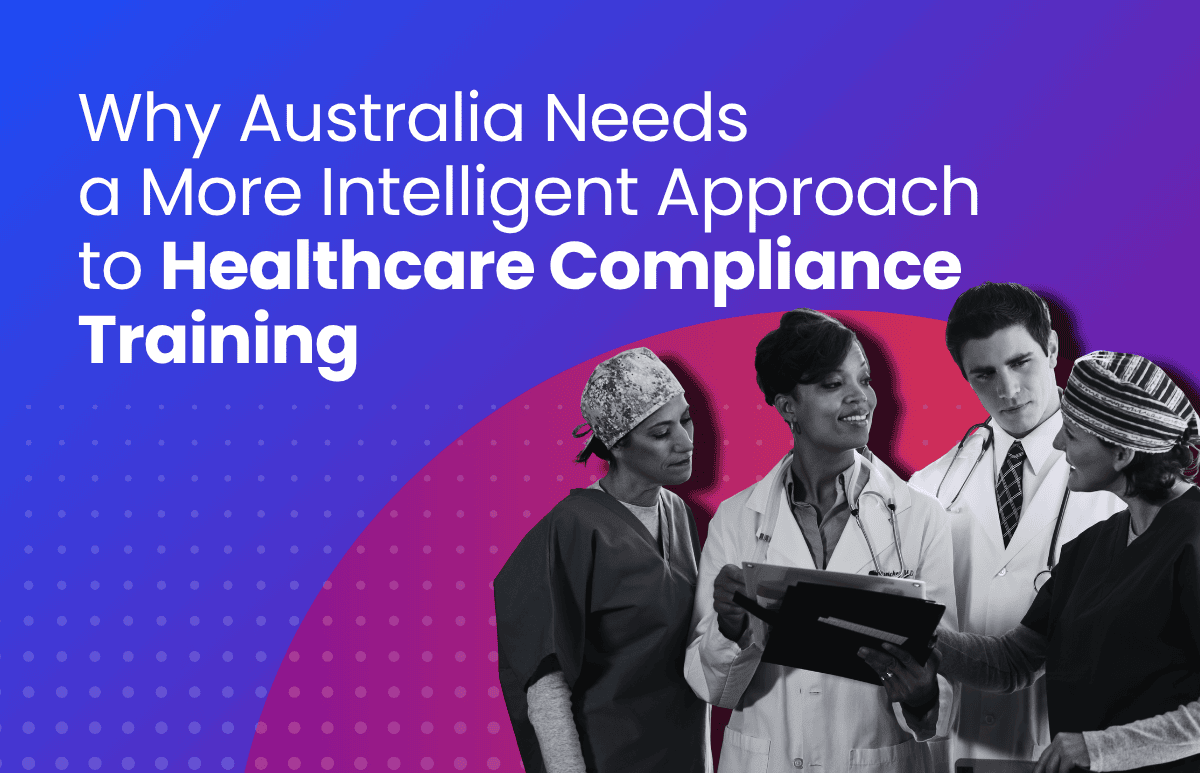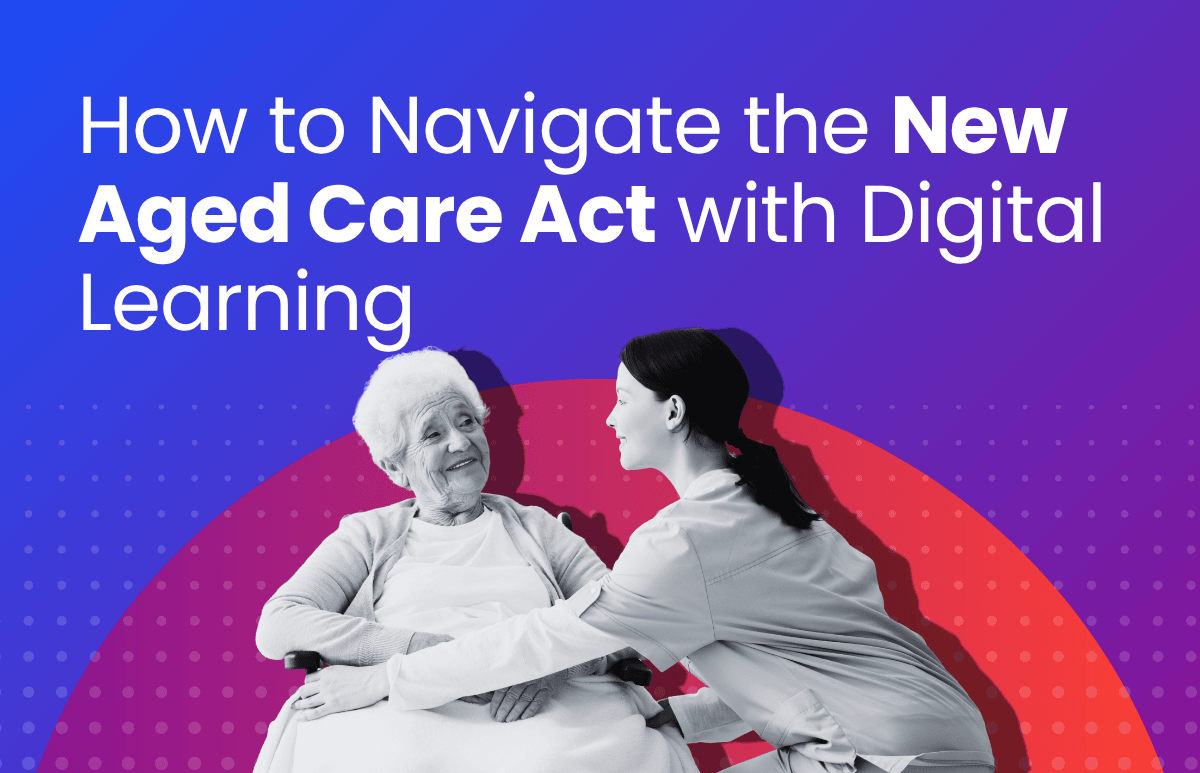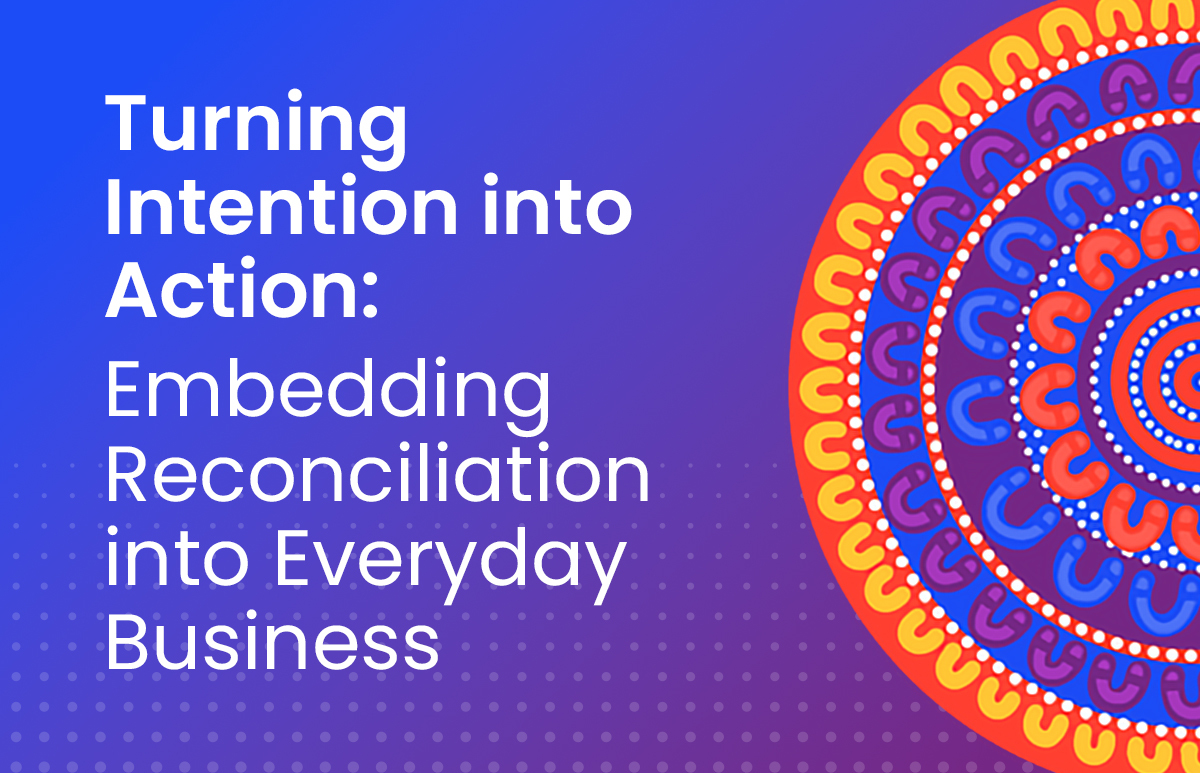Why Australia Needs a More Intelligent Approach to Healthcare Compliance Training
Discover why streamlining healthcare compliance training in Australia is crucial, and how modern HR and learning solutions can elevate your approach.

Healthcare compliance training isn’t optional, it’s utterly non-negotiable. It’s this vital training (especially for new hires) that keeps patients safe, protects staff, and ensures organisations meet their legal and ethical obligations.
The real question is: how are you managing it?
From hospitals to aged care and NDIS providers, healthcare professionals spend countless hours completing mandatory courses. Meanwhile, HR teams wade through messy spreadsheets, ad-hoc reminders, and manual reports to prove everyone’s compliant. The result? A system that may satisfy the letter of the law but rarely feels efficient or connected.
According to ELMO’s 2025 HR Industry Benchmark Report, HR leaders in healthcare say:
- 31% expect challenges with upskilling, cross-skilling or reskilling employees
- 29% identify a shortage of skills as a key issue
- 28% see legislative change as a major hurdle
Looking at these insights, it’s quite clear that training, skills, and legislative compliance remain a significant hurdle – and patchwork processes won’t cut it.
It’s time for a smarter, more connected way to manage compliance. Ideally one that also lifts capability, reduces your risk and gives HR teams back some headspace to do away with reactivity and have more capacity lead change instead.
The compliance challenge in Australian healthcare
In healthcare, compliance training isn’t just another HR process. It’s the foundation of safe, ethical, and high quality care. Every healthcare worker, from nurses and clinicians to admin staff, likely needs a mixture of core and role-specific training to stay compliant.
Core compliance training
These courses create a shared understanding of what a safe, respectful, and professional workplace looks like. They can include:
- Work Health and Safety (WHS)
- Anti-Discrimination and Harassment
- Privacy and Data Protection
- Code of Conduct and Ethics
- Cultural Safety and Inclusion
Role-specific and mandatory training
Depending on the healthcare role in question, many will come with added responsibilities, meaning that compliance training needs to reflect that. Certain employees may also need to complete training for:
- Patient Confidentiality
- Fire Safety and Emergency Procedures
- Manual Handling
- Cybersecurity Awareness
- Infection Control
- CPR and First Aid
- Medication Safety and Administration
Refreshers and governance
Training doesn’t stop after onboarding either. Staff must also regularly renew certifications and stay up to date with policy, system and legislative changes. Healthcare organisations must also record, monitor and verify training completion to meet accreditation requirements under various relevant frameworks such as the NSQHS Standards, Aged Care Quality Standards, and NDIS Practice Standards etc.
Why healthcare compliance training matters
While compliance acts to protect your organisation, good compliance training also protects people. When it’s done well, it:
- Keeps your organisation legally compliant and ready for audits
- Builds a safe and inclusive workplace for staff and patients alike
- Reduces risk, from legal issues to reputational damage
- Helps employees feel confident and accountable in their roles
- Provides vital role-specific healthcare knowledge
Yet for many healthcare providers, compliance training remains fragmented. Courses are managed across multiple systems, tracked manually, and delivered in isolation. This makes it difficult to see who’s up to date, when renewals are due, or whether people are ready to start work through onboarding practices.
The old way of managing healthcare compliance training
Before digital platforms became ubiquitous, compliance training in healthcare was mostly a manual and fragmented process. It may have kept organisations compliant, but it was far from efficient. The issue is that these antiquated methods still persist in 2025, despite far more advanced methods available.
Older and inefficient methods often include:
- Paper-based tracking
- Spreadsheets everywhere
- Local storage
- Repetition across sites
- Reactive compliance
Sure, manual based paper methods got the job done, but just barely. The process was slow, inconsistent and hard to maintain across large or distributed workforces. Now, with digital tools and connected data, healthcare HR teams can finally move beyond chasing paperwork to managing compliance proactively.
Why compliance training needs to be more connected
In healthcare, it’s usually not compliance itself that causes issues and poses challenges, it’s the fragmentation. When different departments or facilities manage training in silos, it leads to duplicated effort, inconsistent standards, and a lack of real-time visibility. HR ends up reacting to issues instead of preventing them.
It also comes down to onboarding and time-to-productivity. For example, according to ELMO’s 2025 HR Industry Benchmark Report, it takes an average of 30 days for a new healthcare hire to become fully productive. That’s already ahead of the ANZ average, but connected systems could cut that down even further by removing manual busywork and replacing it with smooth and dependable modern workflows.
By shifting to integrated, cloud-based systems, healthcare organisations can:
- Centralise all compliance and learning data for organisation-wide visibility
- Give both employees and managers access to training records anytime and anywhere
- Connect compliance with onboarding so new hires are compliant before day one
- Align learning content to national healthcare standards for quality and consistency
When your systems speak the same language, compliance becomes another part of everyday operations. Your people get up to speed faster, HR has more time, and everyone has greater confidence that the right training is firmly in place.
Elevating compliance training from an obligation to an advantage
Compliance training will always be an essential aspect of managing healthcare employees, but it doesn’t have to be time-sapping, riddled with errors, or difficult to verify. With the right tools, it can also support your people’s professional growth and development.
Modern Learning Management Systems (LMS) help HR teams move from reactive to proactive. Instead of chasing completions, they can focus on strategy and capability.
A strong LMS can:
- Automatically assign mandatory training based on role or location
- Build custom courses or draw from a pre-built library of options
- Track completions in real time and flag upcoming renewals
- Send reminders to employees and managers automatically
- Maintain a digital audit trail for reporting and accreditation
Pro Tip – ELMO Learning is built to do exactly that. It supports automated compliance workflows, tracks policy acknowledgements, and integrates seamlessly with onboarding. That means compliance happens in the background, while teams stay focused on their primary purpose – delivering the best care available.
Better yet, once the essentials have been covered, healthcare organisations can use ELMO to create development pathways that help staff build new skills and stay engaged in their work.
Connecting compliance with capability
It may feel that compliance is just a necessary formality, but it can also be about building a workforce that’s ready for anything. By connecting compliance to capability, healthcare HR leaders can turn training into a strategic advantage.
They can:
- Bring training to life with real-world examples and scenarios
- Combine compliance modules with clinical upskilling opportunities
- Use learning data to identify skill gaps early and plan future development
This approach ensures compliance training doesn’t just meet basic requirements, it can also strengthen care delivery, improve safety, and help people grow in their roles.
Food for thought
Healthcare compliance training isn’t going away, but how it’s managed can absolutely change for the better. By connecting systems, automating admin, and linking compliance with capability, healthcare HR teams can save time, reduce risk, and create a better experience for staff. Ultimately, this will lead to the true end goal of healthcare: the best patient outcomes possible, delivered by a competent and well-supported workforce.
 HR Core
HR Core 









